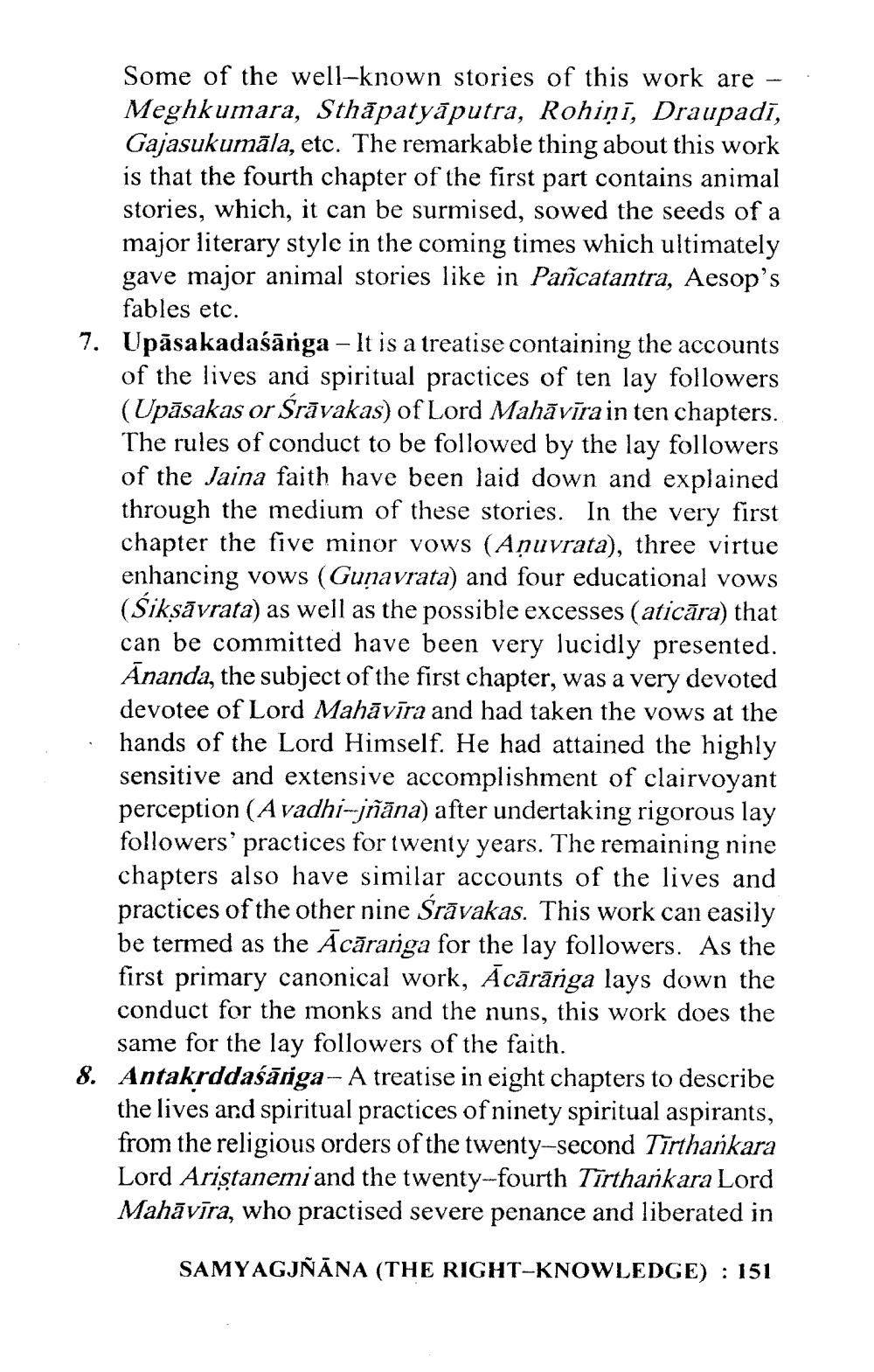________________
Some of the well-known stories of this work are - . Meghkumara, Sthāpatyāputra, Rohiņi, Draupadi, Gajasukumāla, etc. The remarkable thing about this work is that the fourth chapter of the first part contains animal stories, which, it can be surmised, sowed the seeds of a major literary style in the coming times which ultimately gave major animal stories like in Pañcatantra, Aesop's
fables etc. 7. Upāsakadaśānga - It is a treatise containing the accounts
of the lives and spiritual practices of ten lay followers (Upāsakas or Srāvakas) of Lord Mahāvīra in ten chapters. The rules of conduct to be followed by the lay followers of the Jaina faith have been laid down and explained through the medium of these stories. In the very first chapter the five minor vows (Anuvrata), three virtue enhancing vows (Gunavrata) and four educational vows (Siksāvrata) as well as the possible excesses (aticāra) that can be committed have been very lucidly presented. Ananda, the subject of the first chapter, was a very devoted devotee of Lord Mahāvīra and had taken the vows at the hands of the Lord Himself. He had attained the highly sensitive and extensive accomplishment of clairvoyant perception (Avadhi-jñāna) after undertaking rigorous lay followers' practices for twenty years. The remaining nine chapters also have similar accounts of the lives and practices of the other nine Śrāvakas. This work can easily be termed as the Ācāranga for the lay followers. As the first primary canonical work, Acārānga lays down the conduct for the monks and the nuns, this work does the
same for the lay followers of the faith. 8. Antakrddaśārga- A treatise in eight chapters to describe
the lives and spiritual practices of ninety spiritual aspirants, from the religious orders of the twenty-second Tīrtharkara Lord Ariştanemi and the twenty-fourth Tīrthařkara Lord Mahāvīra, who practised severe penance and liberated in
SAMYAGJÑĀNA (THE RIGHT-KNOWLEDGE) : 151




